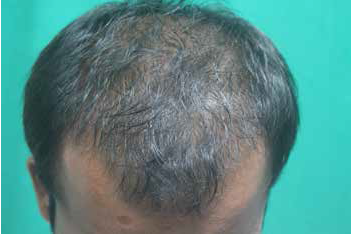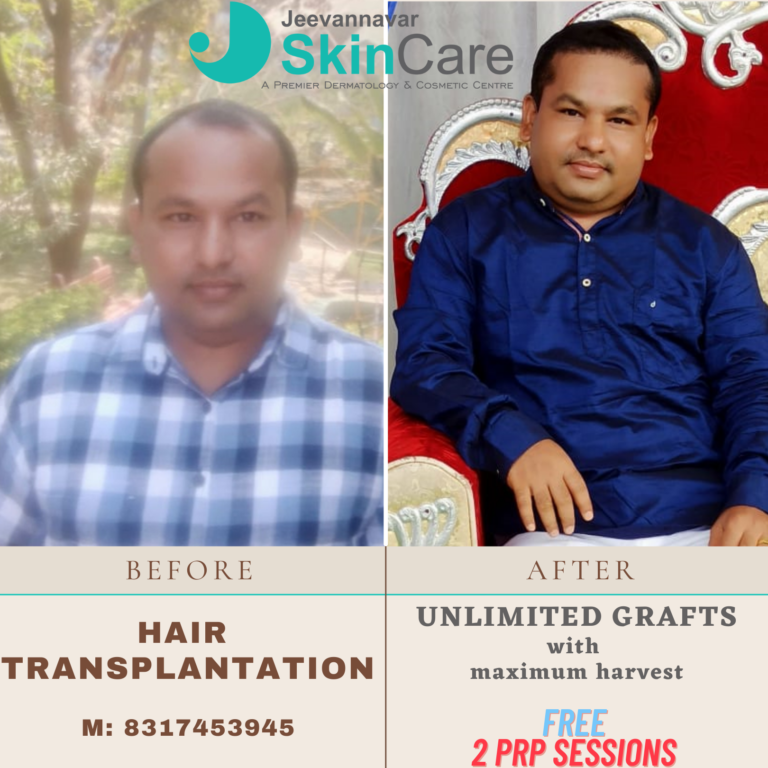
What is Male Pattern baldness ?
Male pattern baldness, also known as Androgenetic alopecia, is a common type of hair loss that affects men. It is caused by a combination of genetics and hormones. Men with this condition typically develop receding hairlines and baldness on the top and front of the head. The hair becomes thin and may fall out completely, resulting in baldness. Male pattern baldness is not a health threat, but it can cause distress and affect a person’s self-esteem.
It affects about 30% of men by the age of 30 and 50% of men over the age of 50.
What is the cause for hairloss ?
The exact cause of male pattern baldness is not fully understood. However, it is believed to be caused by a combination of genetics and hormones. The main hormone involved in male pattern baldness is dihydrotestosterone (DHT), which is a byproduct of testosterone. DHT causes the hair follicles to shrink, resulting in hair loss. Men who have a family history of male pattern baldness are more likely to develop the condition. Additionally, certain factors, such as advanced age, high levels of stress, and certain medical conditions, may increase the risk of male pattern baldness. However, the role of these factors is not well understood.
Clinical features of Male Pattern Baldness?
A receding frontal hairline is the usual pattern and there may be loss of hair from the top of the head.
Hairs in the affected areas are thin and short before they become absent.
Men become aware of scalp hair loss or a receding hairline at any time after puberty but most of them become aware of it as they approach their thirties.
Hair loss may cause significant psychological difficulties.
Treatment for Male Pattern Baldness?
Male pattern baldness is progressive and it does not improve or reverse without treament.
Minoxidil
- 5% minoxidil liquid or foam applied to the scalp may slow down the progression of hair loss and partially restore hair.
- It is applied to the affected scalp (not the hair) using a dropper or pump spray device and should be spread over the affected area lightly.
- Minoxidil can cause reactions such as dryness, redness, scaling and/or itchiness at the site of application and should not be applied if there are cuts
or open wounds. - At least 6 months of application is required to notice any benefit.
- Minoxidil solution may cause an initial hair fall in the first 2-8 weeks of
treatment, and this usually subsides when the new hairs start to grow.
Role of PRP (Platelet-Rich Plasma) in Hair Regrowth
Platelet-rich plasma therapy has become a new popular treatment for hair regrowth in male pattern baldness. Activated platelets release numerous growth factors and cytokines from their alpha granules as part of the wound healing process. Platelets in PRP become activated when injected into the scalp and release multiple growth factors, which promote hair growth. PRP tends to progress hair caliber and hair growth for about 4 to 6 weeks which needed repeated treatments once a month for 3 months.
Peptides
Several peptides have come like Redensyl, Capixyl, Procapil which consists of several active molecules working in different mechanism are being used giving results in Hairloss but hairgrowth is still inferior to minoxidil.

